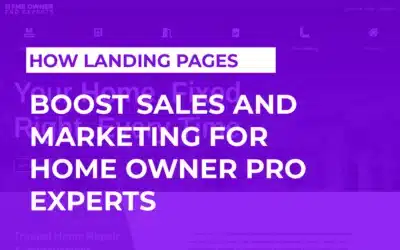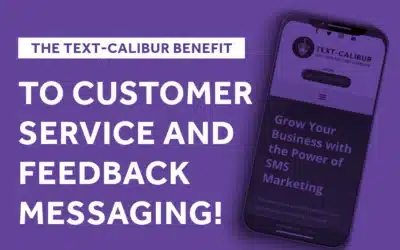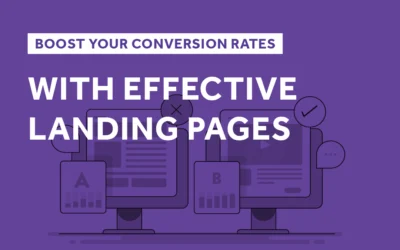You’ve probably heard the term “landing page” thrown around, but do you really know what a truly successful landing page contains and how it should function? And do you really know why landing pages are an important part of your marketing strategy, and how they’re different than your website?
In this article, we’ll show you why landing pages make more money than a business’s standard website, and how they can actually have a powerful impact on your brand– either positively, or negatively.
Differences Between a Landing Page and a Website
You might be thinking “Wait a second, isn’t a landing page just a page on my website that I send traffic to?” And the answer to that is sort of, but there are actually some nuanced differences you need to be aware of between ‘a page on your website’ and ‘a landing page optimized to convert.’
One of the main things that sets landing pages apart from a standard page on your website is the measure of specificity it uses. When you have a page on your website, it’s often loaded with a good amount of general information so that customers can get a topline view of who you are and what you offer. A notable way that a landing page differs from your website is that a landing page is designed to match something specific that a customer is searching for. So rather than a general overview of all of your products and services, it keys in on the exact product or service the potential customer is looking for.
As an example, let’s say your company sells insurance. On your website, you’ll likely have a single page that explains all of the different types of insurance you sell (or typically at most a different, simple page that explains each insurance type). It’s not too in-depth. Customers can gain some high-level, broad information that can guide them to the point of contacting you, but not usually anything much deeper than that. This can most often help customers when they’re at the top of the funnel, and starting their research.
Landing pages are much more focused on getting customers further down in the sales funnel than a website would be. A landing page is more conversion-driven and is attempting to get the visitor engaged, and driving them to take a specific action (such as giving their contact information or even making a purchase). Landing pages are designed to follow a specific flow that leads the customer toward taking a single action– anything else is extraneous.
Landing pages are usually far more specific in their content than a website. For example, if your landing page is trying to get customers to inquire for a quote about home owner’s insurance, the page will likely have some or all of the following elements:
- A clear call to action asking the customer to do a single, specific thing.
- Some sort of lead capturing mechanism such as a form fill or chatbot.
- Phrases that make the customer want to take action (this is also known as putting them in pain).
- Incentives to take action such as a percentage of savings or other benefits
- No other menu items, tabs, or navigation options
A landing page goes beyond general education and is designed to use a call to action to get visitors to convert into a lead or sale. Since your website is built to introduce customers to your brand and build a baseline level of trust, these sorts of things wouldn’t likely be on your standard webpage.
Why Landing Pages Make More Money Than Websites
Hammers are great at pounding nails, and screwdrivers are great at putting in screws. Sure you can flip-flop the jobs of the hammer and the screwdriver, but your results aren’t going to be as good as if you used them for their intended purposes. Know your tools. Your website and your landing pages have different purposes, so use them for what they were built for.
Why isn’t my website making more money? Your website is a gathering place. It’s a hub that lets people explore your company’s details, its product and information pages, and its other content. People go to a website when they’re at the top of the sales funnel, and are typically just becoming aware of your company. Websites are made for people to explore, acting as a tool to build familiarity and brand awareness. You need a solid, clear website for credibility and social proof. The fact is that your website alone doesn’t typically lead to conversions right away– and therefore doesn’t often lead to strong direct sales– but they can keep you in the running as a contender as customers make their purchasing decisions.
Why do landing pages make more money? Landing pages, on the other hand, are masterfully crafted digital machines that are designed and optimized to get conversions online. Landing pages are most commonly constructed with the idea that it’s driving customers to do a single, specific thing (and that thing is different depending on the landing page).
Landing pages are pointing visitors toward one big idea. By doing this, you’re not confusing visitors with multiple things to do. You’re giving your customers a single, clear path toward taking action.
As we mentioned, landing pages even take away navigation bars, and every single piece of information on the page (even though it’s limited) drives people to do a specific thing. By being focused and simple, landing pages give customers a way to get exactly what they’re looking for. This means that landing pages are built from the foundation up to make more sales, and as a result, make more money than a website.
Stop wasting money. It’s a harsh truth to hear, but if you’re directing paid traffic of any kind to your “website” instead of a landing page, you’re essentially wasting money. Remember, your website is a hub that people can use to explore, but it has far too much going on to be optimized in any way for conversions.
So to take this a step further, not only do landing pages make more money than websites– but if you’re not using landing pages, you’re losing money by misusing your website to do a landing page’s job.
Landing Pages Shape Your Brand’s Identity
Gone are the days when a landing page’s only job is to simply act as a “squeeze page” to get a conversion. Sure they’re still an important pillar in the ecosystem of getting leads and making sales, but they’ve evolved far beyond that. For many companies driving traffic to landing pages, the page will be the customer’s first point of contact with your brand. This makes it more crucial than ever that your landing pages are pitch-perfect with the rest of your brand and company image.
If you look at some large, brand-sensitive companies, you’ll see that they not only use the industry standard in terms of landing page design and tactics, but they also build their pages to be a voice for their brand with every single conversion.
For example, a company like SalesForce is selling the promise of making more sales using their software, and their landing page practices what they preach. They clearly ask for a single thing: sign up to watch their free demo on how their reporting will blow you away. They present a pain point that many salespeople face– not knowing the analytics of their specific performance. They lay out some clear, compelling solutions to this problem, then offer a clear, vibrant blue form-fill option that guides customers’ eyes to fill it out.
A company like Shopify wants to show the same straightforward, clean aesthetics on their landing page that customers will experience with their storefronts. So their landing page clearly tells its customers they can ‘Sell online with Shopify’ with some social proof (mentioning that Shopify is trusted by over 400,000 businesses worldwide). There are some powerful (yet simple) benefits to choosing Shopify outlined on the page which is asking for one simple thing: an email to start a free trial.
In these two examples, you can see that each of the landing pages matched the corporate identity of the brand perfectly, which is the goal. One of the best things you can do with a landing page is to achieve a page design that converts excellently and also clearly presents the look, feel, and style of the brand it represents. Landing pages are their own unique tool, but they should feel like an intuitive extension of the company’s main website.
Landing Page Software Will Increase Your Conversions
Don’t make the mistake of using your website to try to convert visitors into leads, or you’re wasting money. And if your head is already hurting as you think about what a headache building a new landing page will be, don’t worry at all: Landerpage.io is the simplest, most effective, most reliable landing page builder on the market. It’s proven that using the right landing page software will increase your conversions, so what are you waiting for?
With our powerful landing page software, you’ll be able to create landing pages in minutes. And if that wasn’t enough, you’ll also be able to create variations of the same page quickly to test and optimize your landing pages with lightning speed. You’ll be pleasantly surprised how simple Landerpage.io is to use directly from the dashboard.
Still not convinced? Try Landerpage.io yourself for free today, and you’ll never go back.




